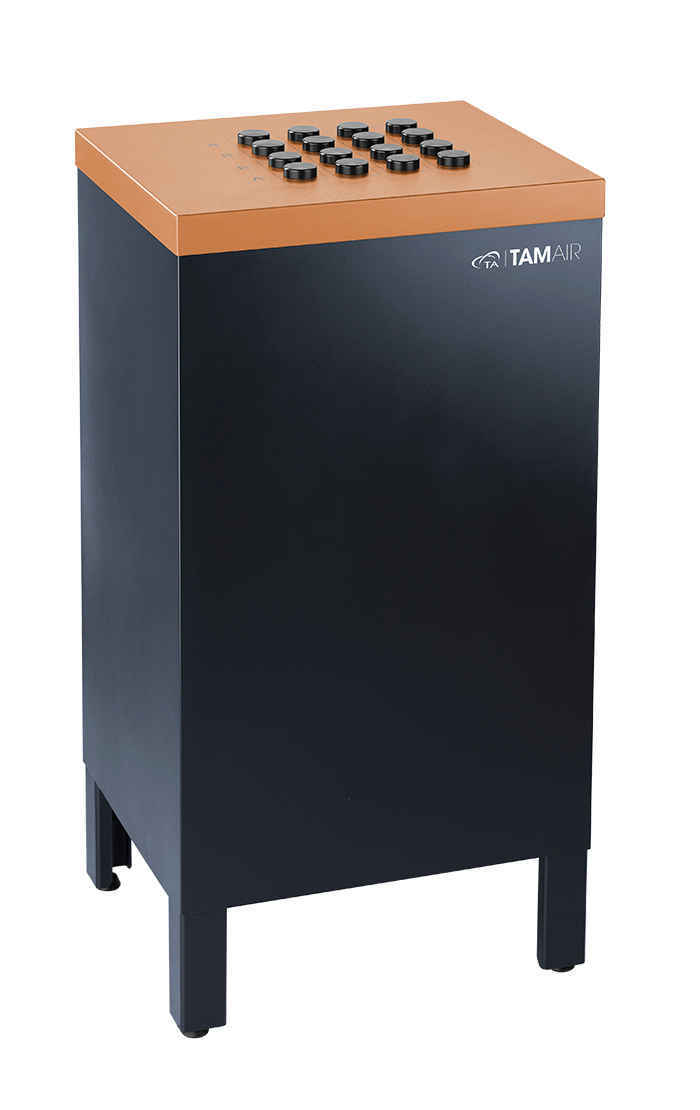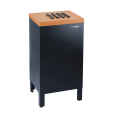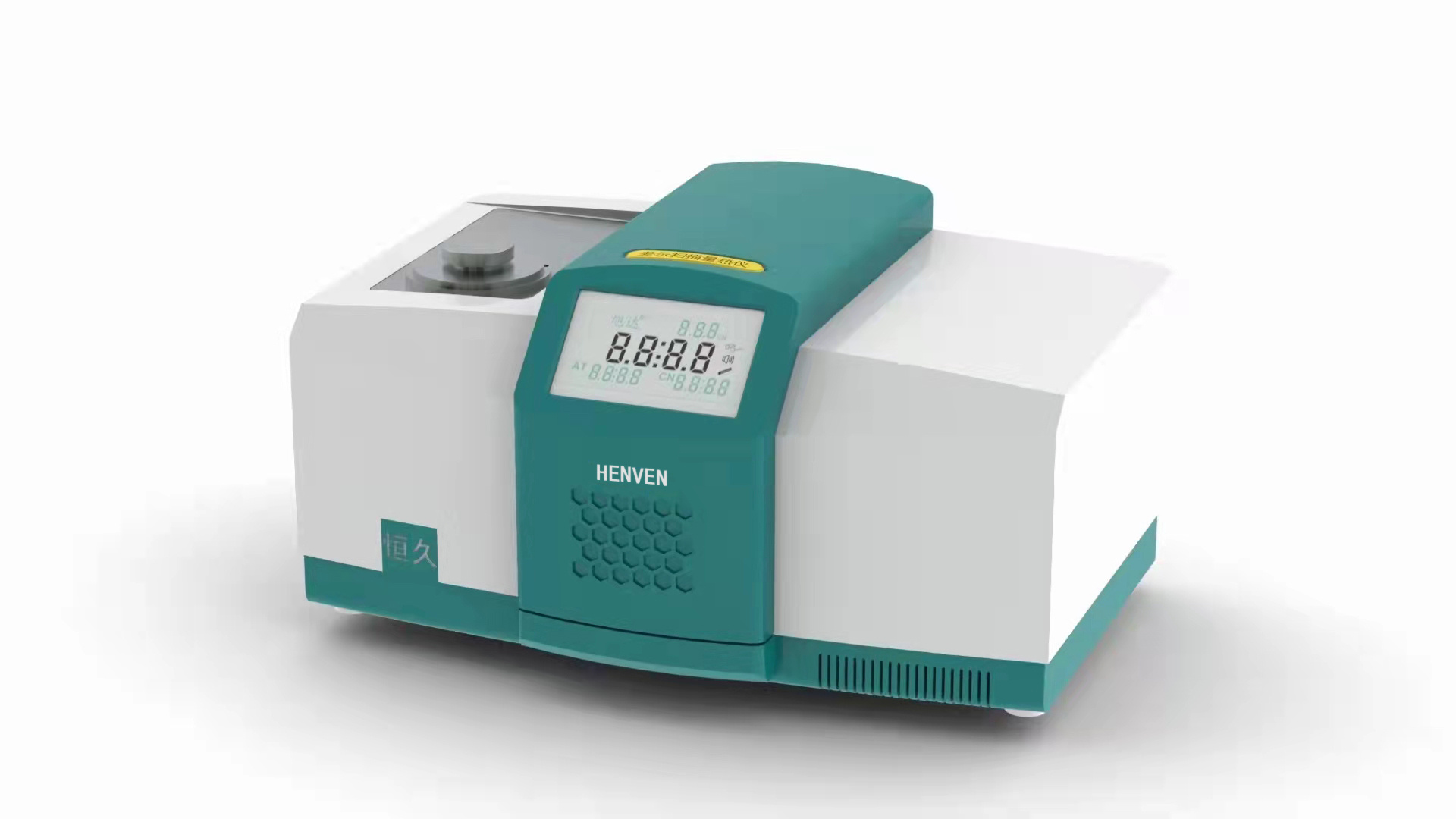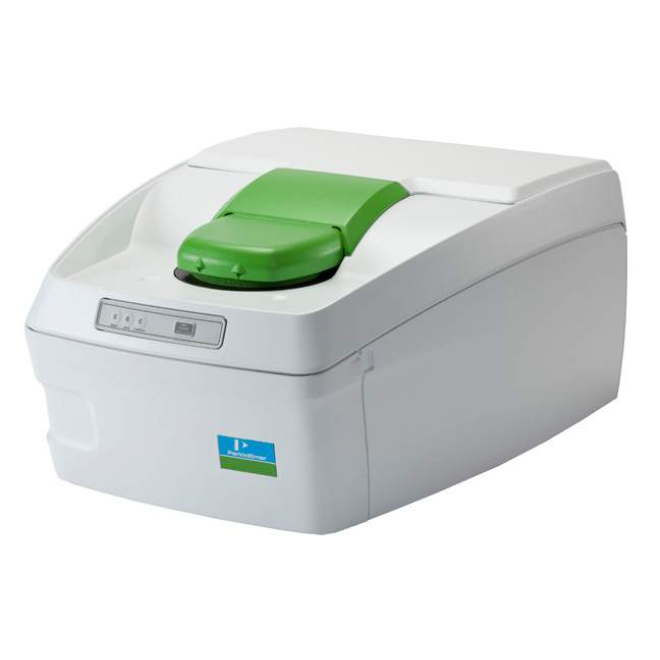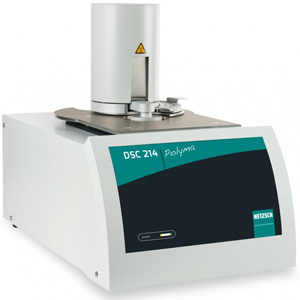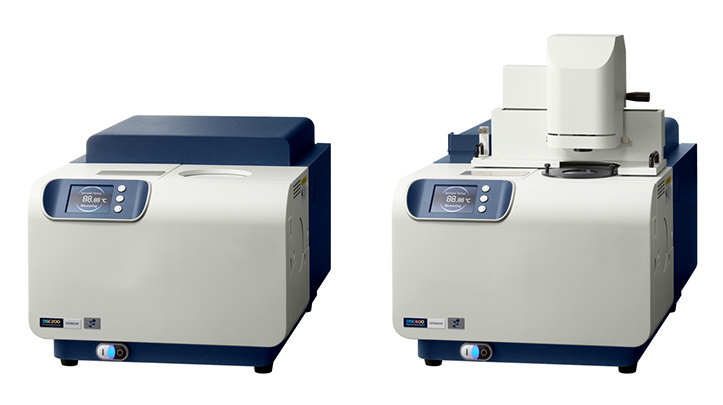Cement is a fnely ground powder of burned limestone. It reacts readily with water (hydrates) to form a solid material, known as hardened cement paste. When cement is mixed together with rock aggregate, sand and filler materials, it forms concrete. Cement is one of the most important base materials in general use in the construction industry. The optimization of concrete with respect to frost resistance, durability, chemical resistance etc. is of great importance.
方案详情

The Study of Cement Hydrationby Isothermal CalorimetryInstruments I Retardation period V.Long-term reactions Isothermal calorimetry is probably the best way to followall stages of the hydration process(Bensled 1987).The measurementss presented below were designed todemonstrate the hydration in stages II-V. To study stage l,it is necessary to mix water and cement inside the sampleampoule within the calorimeter. This is quite easy if there isa high water-cement ratio (w/c), however for lower, morerealistic water content this is a more difficult experiment(Wadso 1995). For the long-term reactions of stage V, amicrocalorimeter would have to be used to achieve therequired increase in detectability. MATERIALS AND METHODS Two experiments were performed with TAM Air using glassampoules. In the first experiment, all eight calorimeters wereloaded with 3.40 - 5.61 g of a cement paste containing anadditive with retarding properties. In the second experiment,another cement paste with six different concentrations of anadditive was tested.The sample sizes were between 4.99-5.85g.The experiments were performed as a delivery acceptancetest at an industrial laboratory; therefore the cement type,w/c or type of admixtures can not be disclosed. RESULTS AND DISCUSSION Figures 1 and 2 show the result of the measurements ontwelve samples of identical composition. It can be seen thatthe spread of the results is very low. MCAPN-0100 Figure 1. The primary result from twelve measurements of samples ofthe same cement paste Figure 2. The integrated result from twelve measurements of samplesof the same cement paste Figure 3 shows the result of the measurement of the hardeningof a mortar.Six different concentrations, 0,0.10,0.15,0.20,0.30and 0.50% of an additive were applied to identical cementpaste. Note that it is possible to see double peaks for thelower concentrations, but not for the higher ones. The twopeaks are probably from the main reactions of the two maincomponents (C, S. C, A). It can be seen from Figure 3 thatthe TAM Air calorimeter is an excellent instrument for thestudy of retardation. Figure 3. The primary result from two representative samples of lowadditive(red) and high additive (blue) with the same cement paste. Adiabatic and semi-adiabatic calorimeters are commonlyused in cement and concrete research. For cement pasteand mortar measurements, the isothermal calorimeter hasbeen shown to be a better instrument than an adiabaticcalorimeter as it gives quantitative data with very highresolution. The isothermal calorimeter is calibrated togive a thermal power output, instead of a quite arbitrarytemperature increase as in the semi-adiabatic calorimeter.The thermal power resolution of the TAM Air calorimeteris in the order of 2.5 mW. The only limitation is the samplesize, which is a maximum of 20 ml.This is because the heatproduced has to be conducted away from the sampleduring the measurement. It is therefore not advisable to usethe TAM Air calorimeter with aggregates larger than 5 mm. FURTHER EXPERIMENTS The TAM Air calorimeter is primarily an instrument for the studyof the induction period and the main stages of the hydration.Interesting applications include the influence on hydrationof glass fillers, waste products, slags and other materialsoften used in concrete. It should be possible to assess theactivation of such materials and to evaluate their effect onthe hydration. The heat production is a result of the hardening processesin the cement paste. It has been shown that the degreeof hydration, the heat produced and the strength arerelated (Taplin 1959, Byfors 1980). Isothermal calorimetricmeasurements can therefore form the basis of design criteriafor the strength and temperature development in concretestructures, as for example, in the minimisation of crackdevelopment. REFERENCES 1.Bensted, J. (1987) "Some applications of conductioncalorimetry 10 cement hydration", Adv. Cement Res.135-44 2. Byfors,J. (1980) "Plain concrete at early ages"Cement-ochBetonginstitutet, Stockholm,Sweden. 3.Taplin, J M (1959) A method for following the hydrationreaction in Portland cement paste" 4.Wadso, L. (1995) "Evaluation of isothermal calorimelry forcharacterization of very early and early cement reactions,a critical literature study",Building Materials, Lund University,Sweden TVBM-7094. 5.Young, J.K (1985) "Hydration of Portland cement" in"Instructional modulus in cement science", ed. D. M.Roy, Materials education Council. Materials ResearchLaboratory, University Park, PA. USA ACKNOWLEDGEMENT Lars Wadso, Building Materials, Lund University, Sweden For more information or to place an order, go tohttp://www.tainstruments.com/ to locate your local salesoffice information. CAPN- Cement is a fnely ground powder of burned limestone. It reacts readily with water (hydrates) to form a solid material, known as hardened cement paste. When cement is mixed together with rock aggregate, sand and filler materials, it forms concrete. Cement is one of the most important base materials in general use in the construction industry. The optimization of concrete with respect to frost resistance, durability, chemical resistance etc. is of great importance.
确定
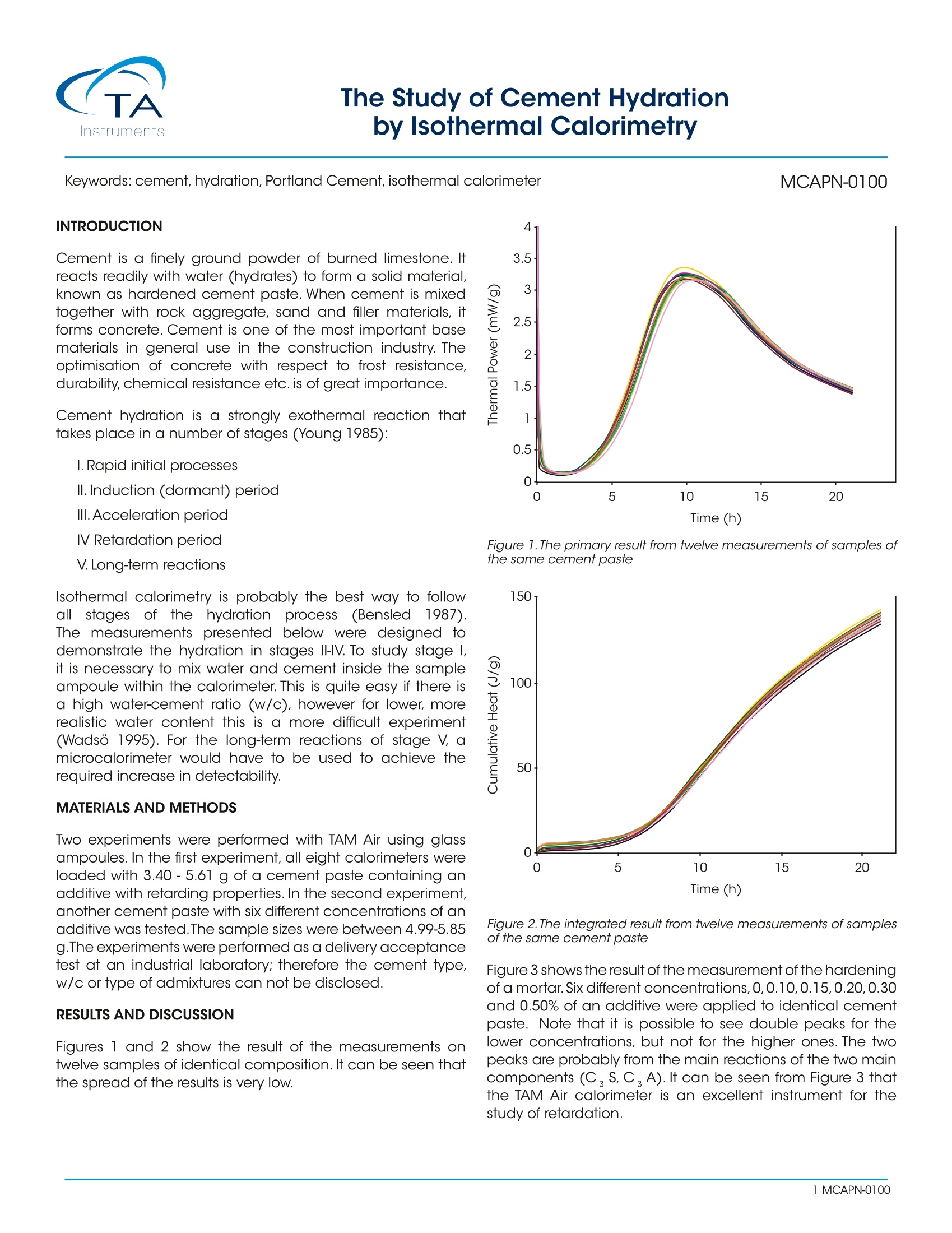
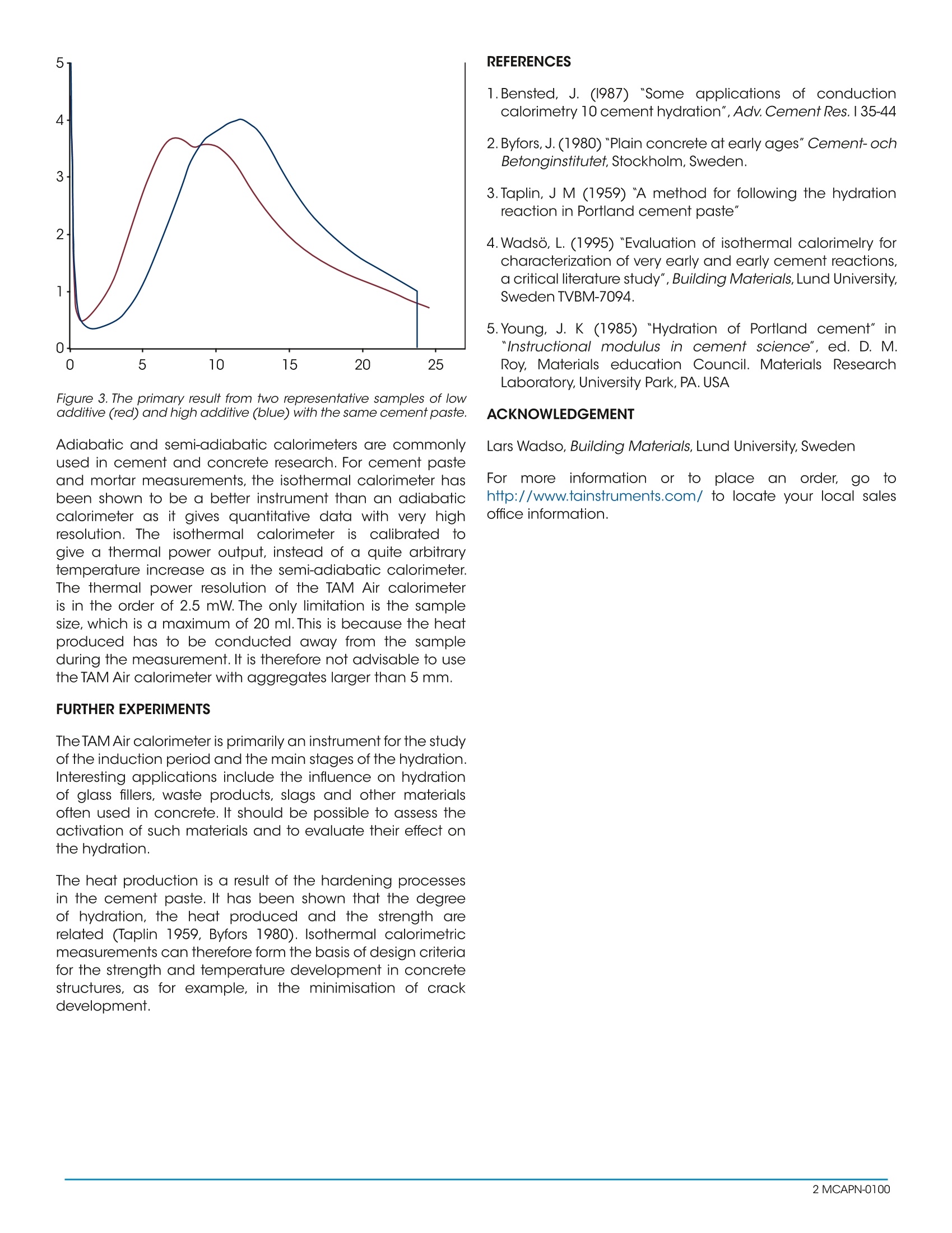
还剩1页未读,是否继续阅读?
TA仪器为您提供《水泥中水泥水化检测方案(差示扫描量热)》,该方案主要用于水泥/混凝土中水泥水化检测,参考标准--,《水泥中水泥水化检测方案(差示扫描量热)》用到的仪器有TA仪器+等温量热仪+TAM Air
推荐专场
相关方案
更多

